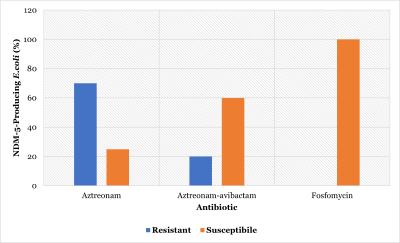Fosfomycin in the treatment of New Delhi Metallo-β-Lactamase-5 (blaNDM-5)-producing Escherichia coli infection
Authors: Abdullah Tozluyur
Ger. J. Microbiol.
2024.
vol. 4, Iss. 1
pp:1-5
Doi: https://doi.org/10.51585/gjm.2024.1.0028

Abstract:
The worldwide spread of Gram-negative bacteria showing pan-drug resistance raises significant concerns. The World Health Organization (WHO) designated carbapenem-resistant Enterobacteriaceae (CRE) as a critical priority on the global pathogen list in 2017. This issue has captured increased attention to research in the field of antimicrobial resistance, specifically concentrating on the discovery of novel antibiotics. The primary mechanism of carbapenem resistance revolves around the production of acquired carbapenemase, including class A Klebsiella pneumoniae carbapenem-resistant (KPC), class B New Delhi Metallo-β-Lactamase (NDM), or class D, such as OXA-48 β-lactamases. These carbapenemases are especially prevalent in Enterobacterales. Given that these various resistance mechanisms are frequently widespread, the available therapeutic options can be severely restricted. The high susceptibility rates to fosfomycin in strains with acquired resistance to carbapenems indicate the potential effectiveness of fosfomycin against such strains. The present study aimed to determine the in-vitro activity of aztreonam, aztreonam-avibactam, and fosfomycin against 64 E. coli isolates exhibiting diverse blaNDM genes. From the data obtained, it can be inferred that resistance to aztreonam is 70% and drops with the combined use of avibactam. However, this combination cannot be used in the treatment of patients with diseases triggered by E. coli that produce blaNDM-5. Meanwhile, all strains tested were susceptible to fosfomycin. Therefore, a remedy for elevated minimal inhibitor concentration of aztreonam, aztreonam-avibactam among blaNDM-5 -producing E. coli may be fosfomycin.
Keywords:
Antimicrobial Resistance, Aztreonam, Avibactam, \textit{Escherichia coli}, NDM, Fosfomycin
Statistics:
Article Views: 1355
PDF Download: 71